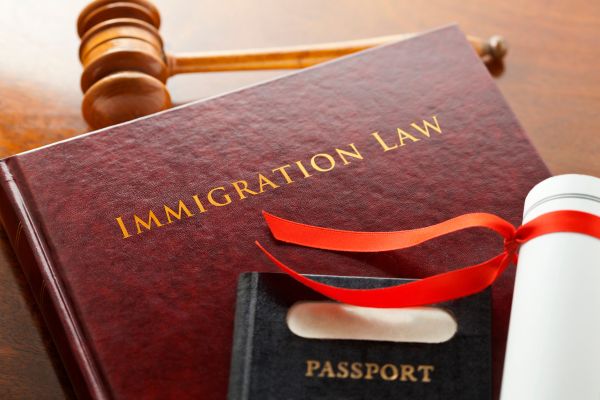Introduction:
Immigration law in the United States is a multifaceted and constantly evolving field that reflects the nation’s complex history, diverse population, and ever-changing political landscape. From the earliest days of the republic to the present day, immigration has been central to the American experience, shaping not only the demographics of the country but also its cultural identity, economic vitality, and social fabric. In this article, we will delve into the dynamic landscape of immigration law in the United States, exploring its historical roots, contemporary challenges, and future prospects.
Historical Foundations:
The roots of immigration law in the United States can be traced back to the founding principles of the nation. The Constitution granted Congress the authority to establish a uniform rule of naturalization, laying the groundwork for the federal government’s role in regulating immigration. Over the years, Congress has passed numerous laws governing immigration, from the Chinese Exclusion Act of 1882 to the Immigration and Nationality Act of 1965, which abolished the discriminatory national origins quota system.
One of the defining moments in the history of immigration law was the passage of the Immigration Reform and Control Act (IRCA) of 1986, which granted amnesty to millions of undocumented immigrants while also imposing sanctions on employers who hired unauthorized workers. IRCA marked a significant shift in immigration policy, reflecting the growing recognition of the need for comprehensive reform to address the challenges posed by unauthorized immigration.
Contemporary Challenges in immigration law:
In the 21st century, immigration law continues to be a highly contentious and polarizing issue in American politics. One of the most pressing challenges facing policymakers is the question of undocumented immigration. Estimates suggest that there are millions of undocumented immigrants living in the United States, many of whom have been in the country for years and have deep ties to their communities. Debates over undocumented immigration often center on issues of border security, economic impact, and national security.
The status of Dreamers—undocumented immigrants brought to the United States as children—is another contentious issue within immigration law. The Deferred Action for Childhood Arrivals (DACA) program, established by the Obama administration in 2012, provided temporary relief from deportation and work authorization for eligible Dreamers. However, the program has faced legal challenges and uncertainty, leaving hundreds of thousands of young immigrants in limbo.
Asylum and refugee law is another critical area within immigration law, particularly in light of global displacement crises and humanitarian emergencies. The United States has long been a leader in refugee resettlement, offering protection to those fleeing persecution, violence, and conflict. However, changes to asylum policies and procedures in recent years have sparked controversy and legal challenges.
The intersection of immigration law and criminal law is also a significant focus of debate and scrutiny. Immigration enforcement agencies collaborate with law enforcement at the federal, state, and local levels to identify, detain, and deport individuals who are in the country unlawfully or who have committed criminal offenses. Critics argue that aggressive immigration enforcement leads to racial profiling, family separation, and violations of due process rights.
Legal and Political Responses:
In response to these challenges, policymakers and advocates have proposed a wide range of reforms to the immigration system. Comprehensive immigration reform, which would address issues such as border security, visa reform, and legalization for undocumented immigrants, has been a longstanding goal for many lawmakers. However, partisan divisions and political gridlock have stymied efforts to pass meaningful legislation.
In the absence of congressional action, presidents have used executive authority to implement changes to immigration policy. The Trump administration, for example, implemented a series of executive orders aimed at restricting immigration and enhancing enforcement measures, including the construction of a border wall and the implementation of travel bans targeting predominantly Muslim countries.
The Biden administration has taken steps to reverse many of these policies while also pursuing comprehensive immigration reform through legislative action. In his first days in office, President Biden signed a series of executive orders aimed at rolling back the Trump administration’s immigration policies, including rescinding the travel bans and reinstating DACA. The administration has also proposed legislation that would provide a pathway to citizenship for millions of undocumented immigrants, strengthen border security, and reform the legal immigration system.
Future Prospects:
Looking ahead, the future of immigration law in the United States remains uncertain. Demographic shifts, economic factors, and geopolitical events will continue to shape the dynamics of immigration policy and practice. As the nation grapples with questions of identity, security, and justice, immigration law will remain at the forefront of legal, political, and social discourse.
Conclusion:
In conclusion, immigration law in the United States is a complex and dynamic field that reflects the nation’s history, values, and aspirations. From its historical foundations to its contemporary challenges and future prospects, immigration law plays a central role in shaping the American experience. As policymakers, advocates, and communities continue to navigate the complexities of immigration policy and practice, the need for informed debate, thoughtful analysis, and meaningful reform has never been more urgent. By engaging in dialogue, empathy, and a commitment to justice, we can work towards a more fair, humane, and inclusive immigration system for all.

